The monobar story
Atmospheric
Diving
Suits 1900-1920
1902
Enos B. Petrie USA
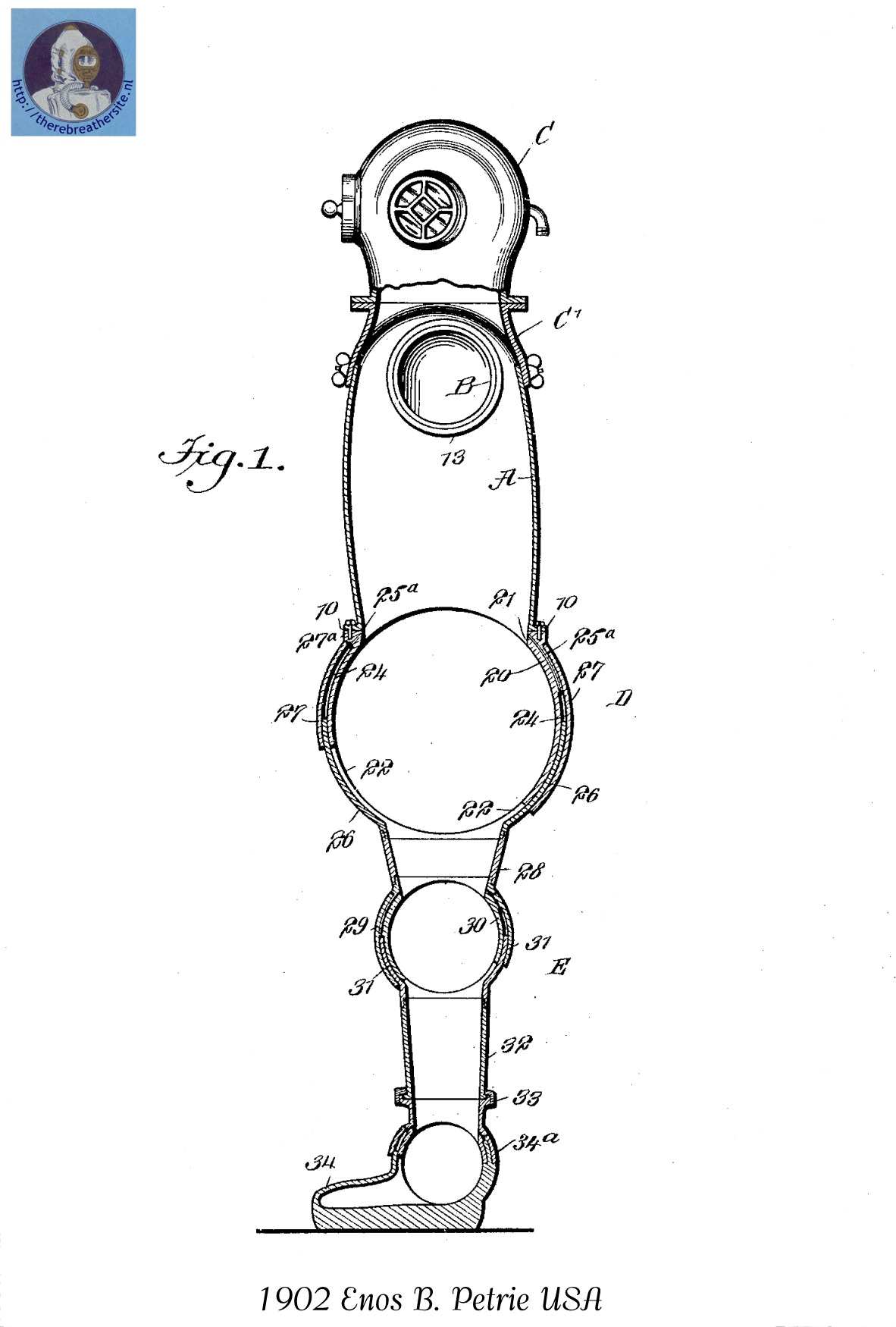
Petrie’s patent focuses on the freedom of movement of the joints. To this end, he provides the joint with a ventilation channel to the inside of the suit. He does not specifically address the issue of making the joints waterproof, and therefore writes that the suit should preferably be lined with a rubber suit.
1903
John L Watson
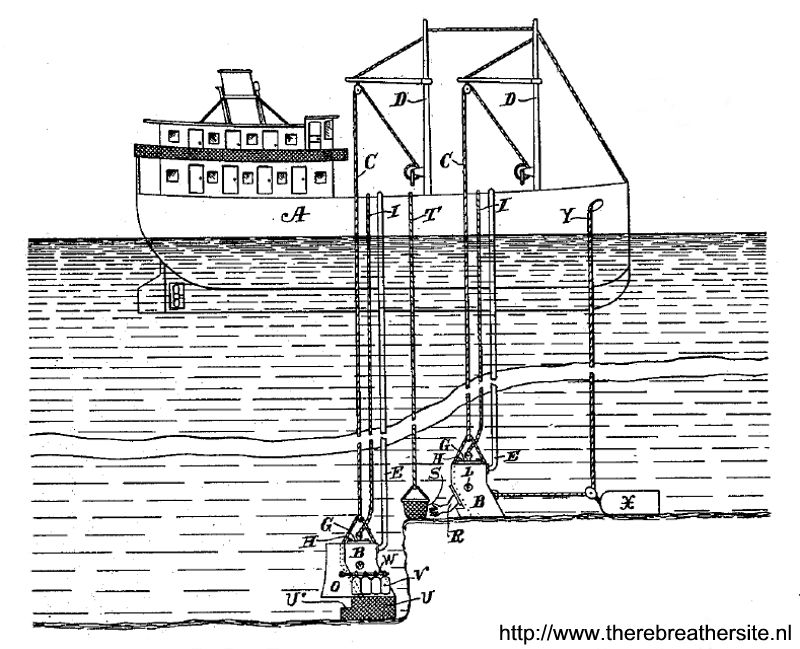
John Watson designed a diving bell with some interesting futures. The diving bell was equipped with a toolbox placed on the outside of the bell. Also Watson made an escape system for the diver.
1903
Alphonse Carmagnolle (dit Karl)
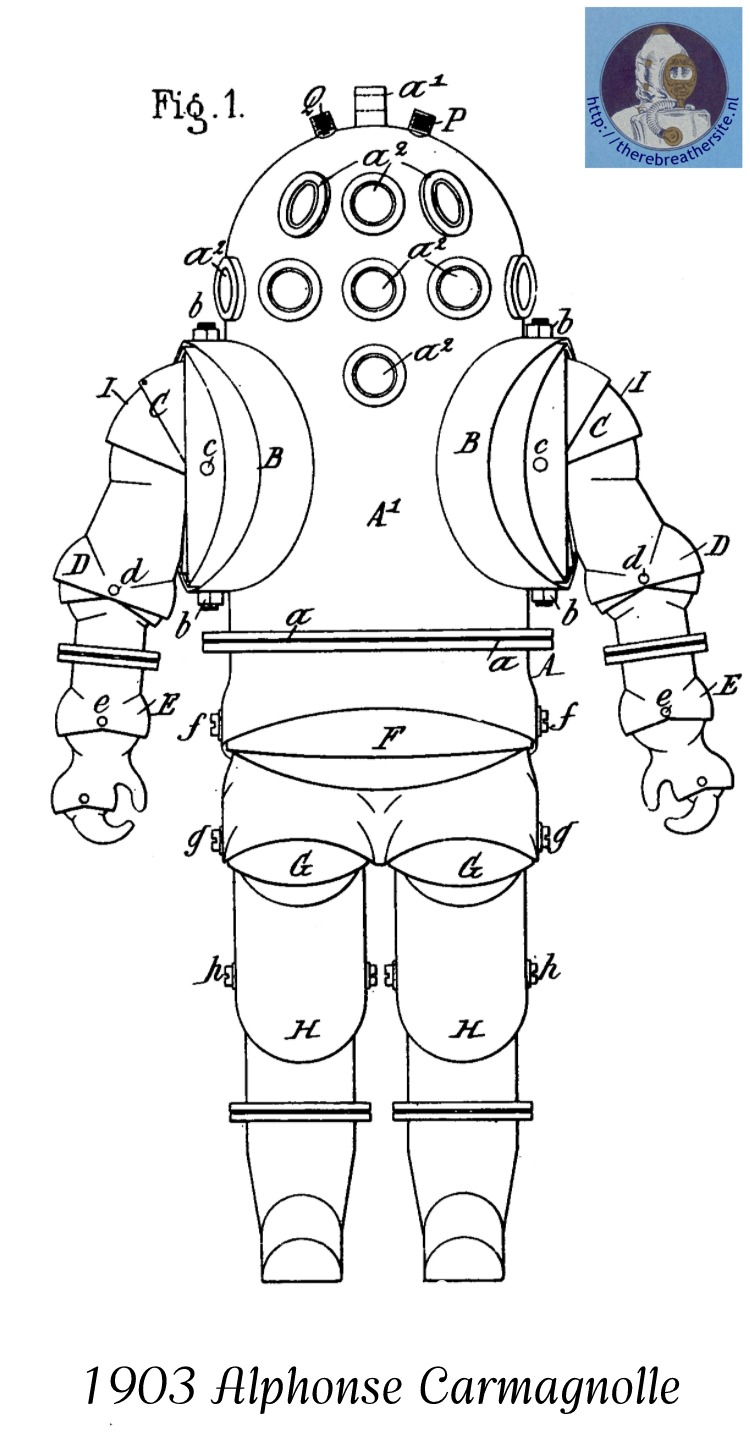
The Carmagnolle brothers (Theodore and Alphonse) already in 1882 built the world famous diving suit with a large number of viewing windows similar to this patent. However, the construction differs from the suit that was patented by Theodore in 1903. It is remarkable that probably also in 1882 the joints had to be covered with a waterproof material to prevent leakage.
1903
Wichmann und Zopke

Spiral wire armouring makes its appearance yet again in a design by Wichmann and Zopke in 1903.
This proposes to encircle the diver’s trunk and tights with flat steel spiral bands drawn tight by a handle-operated ratchet.
1904
Joseph von Miniszewski

Miniszewski patented an atmospheric device in 1904 that is not actually anthropomorphic and does not belong in this list. The idea looks very much like a submarine. The patent shows that the ball contains a mechanism for propulsion and valves with an air reservoir for raising and lowering the ball. An unusual design of which it is unknown if it has ever been executed.
1904
Jean Claude Malatray France
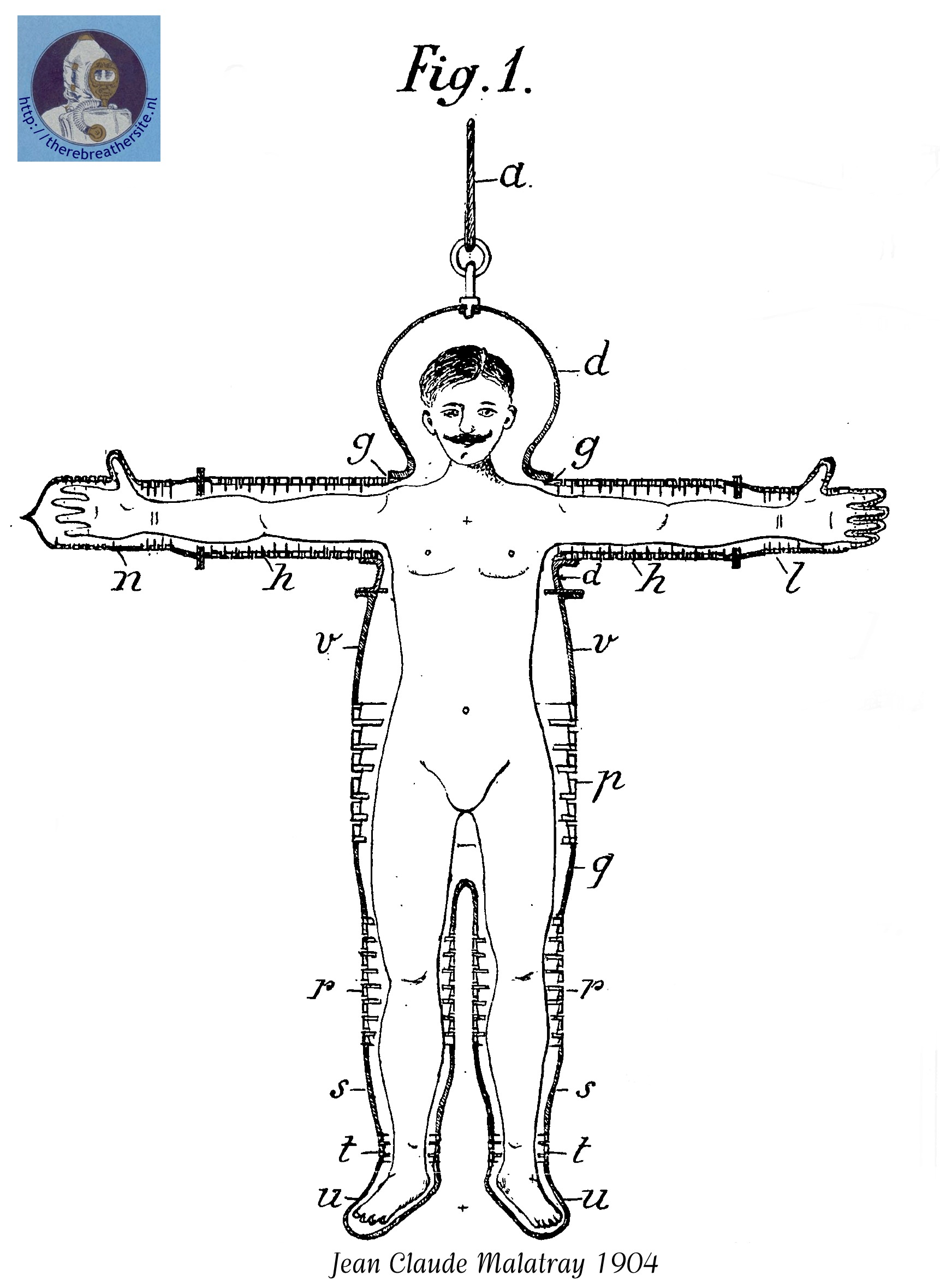
The diving suit covered by the invention enables the diver to descend to very great depths and to carry out the necessary movements. It consists of an all-metal armour which protects all parts of the diver’s body; this armour is made up of certain rigid parts and other parts which are hinged; the latter are made watertight by means of appropriate attachments.
1904
Jaques Franc et Eugene Galaup
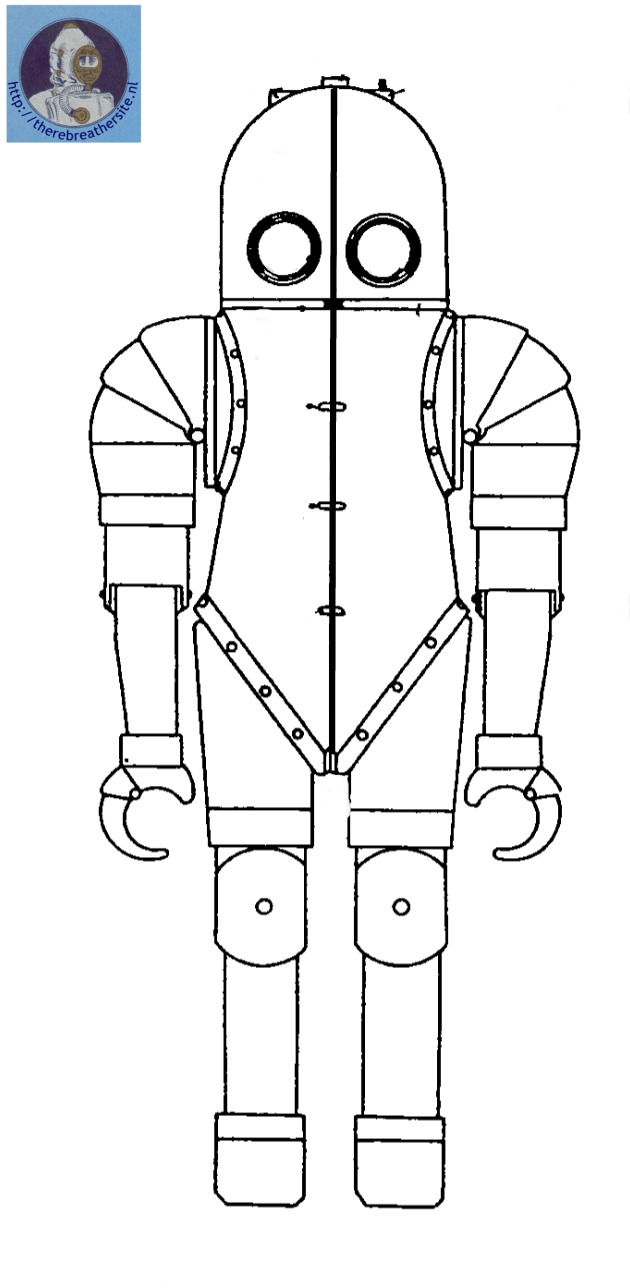
The diving suit, the object of the invention, is an apparatus designed to protect divers against the pressure of the water mass when they descend to great depths. In ordinary diving suits, the air, forced into the suit at a higher pressure than that exerted by the water outside, causes great fatigue of the lungs, sometimes even asphyxiation. The new suit overcomes these disadvantages.
1904
Petrie and Martin
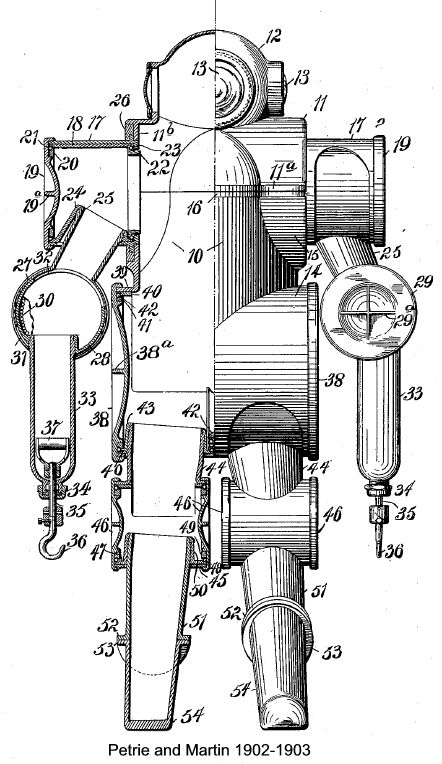
Enos B. Petrie, of U.S.A., designed in 1902 an armoured dress having ball-and-socket joints of a somewhat peculiar type. The “socket” portion of the joint was double, and passed on either side of the “ball” shell. The friction of such joints would be considerable. At the shoulders, annular joints were used, kept watertight by leather packing-rings. It was proposed that the whole dress should be enclosed in a rubber envelope.
1904
Petrie and Martin build in Waterpump
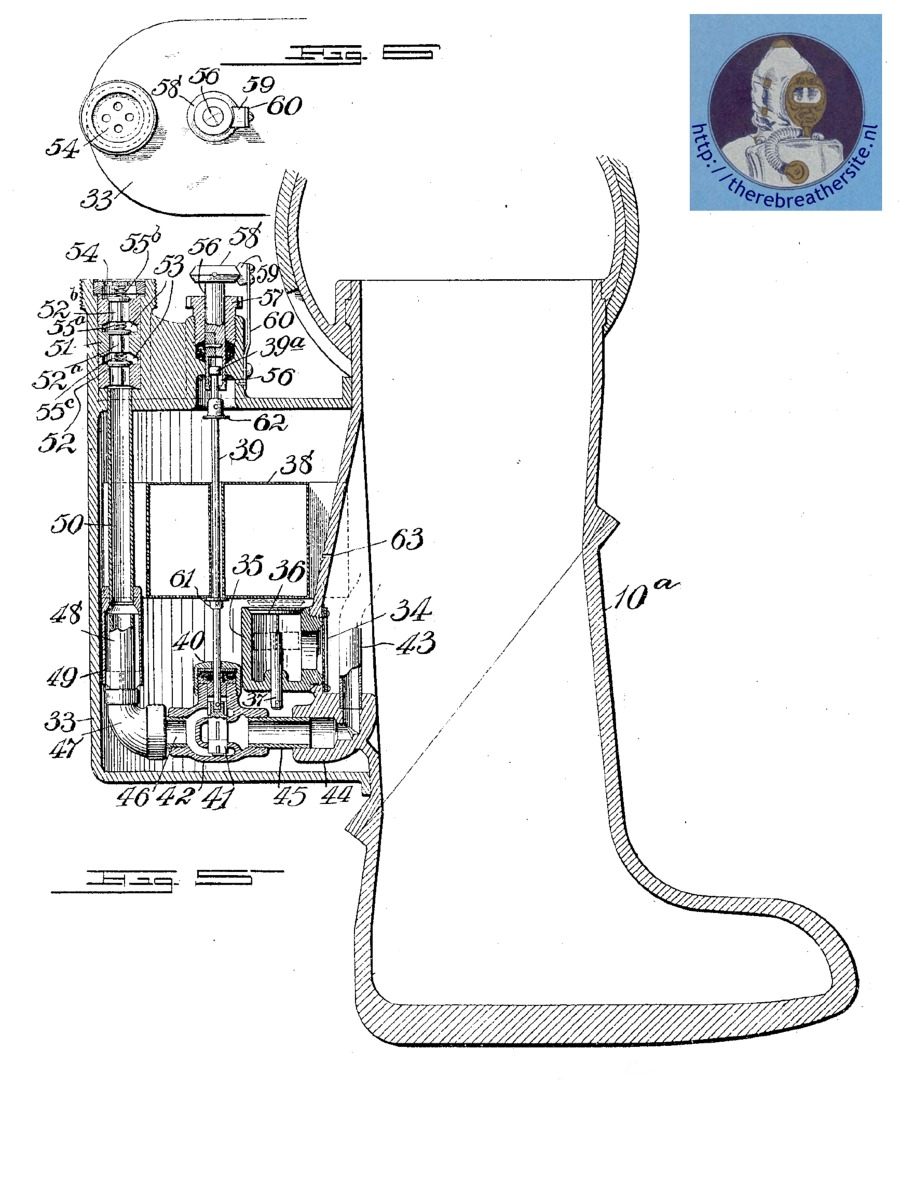
Petrie and Martin developed an air-powered water pump to pump water out of their atmospheric diving suits.
1904
Giuseppe Restucci
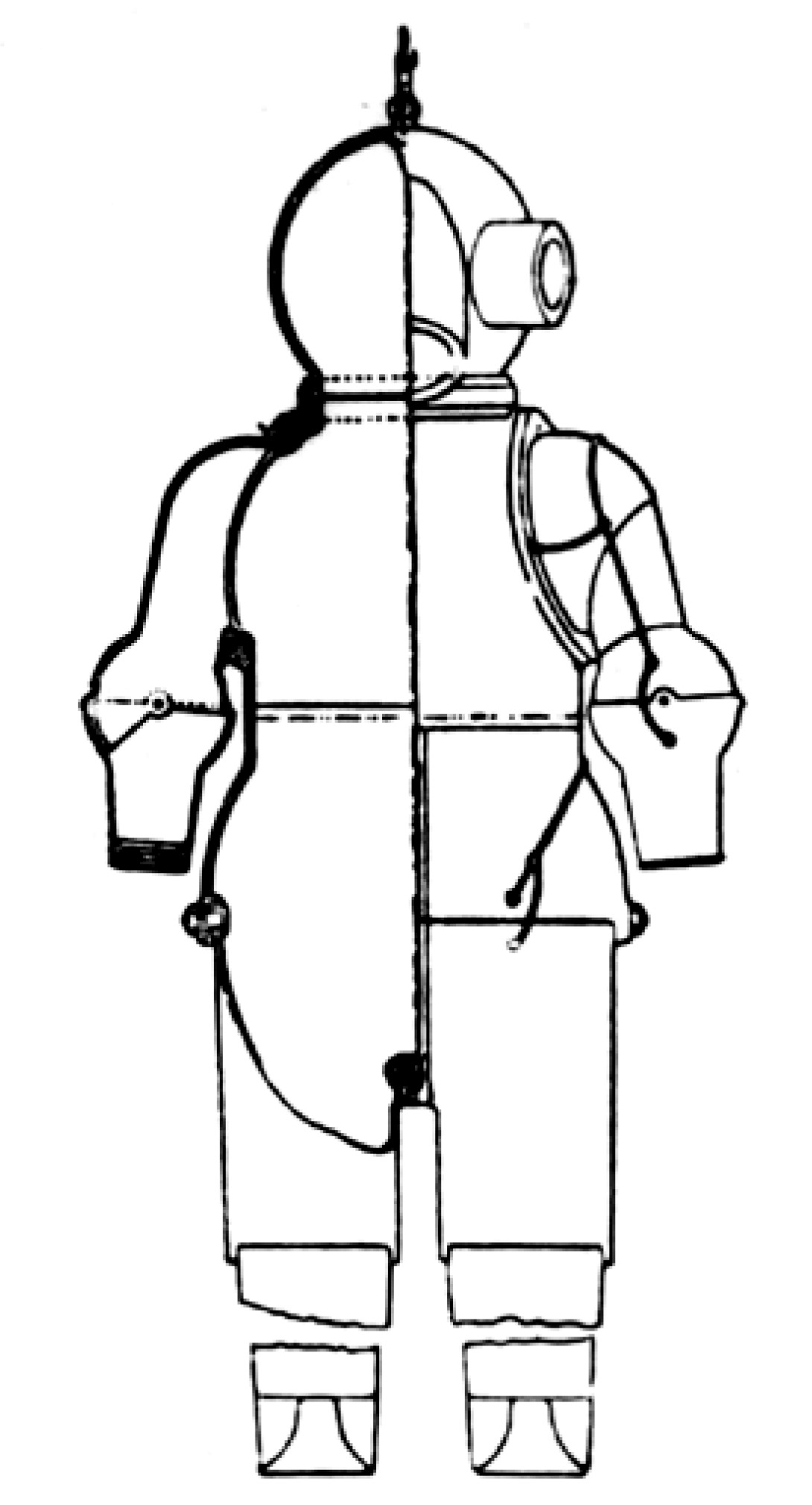
Giuseppe Restucci designed his first suit in 1904. The joints should be made watertight by means of overpressure. The patent he had in 1908 describes a more simple suit, mainly designed for salvaging small items from the seabed.
1904
Archibald McGregor
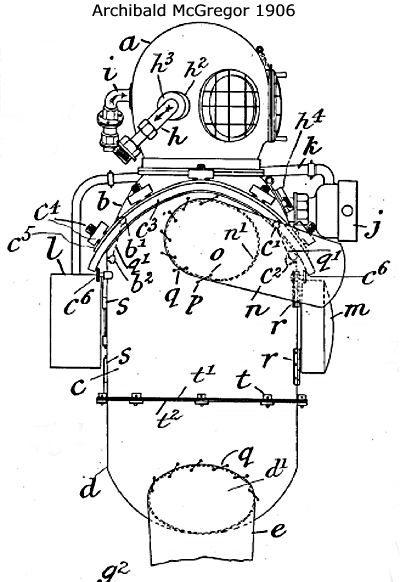
A patent taken out in 1906 by Archibald McGregor, of Queensland , recalls that of Murray and Stuart, since it provides the diver with three separate dresses.
1906
Frank Knoff
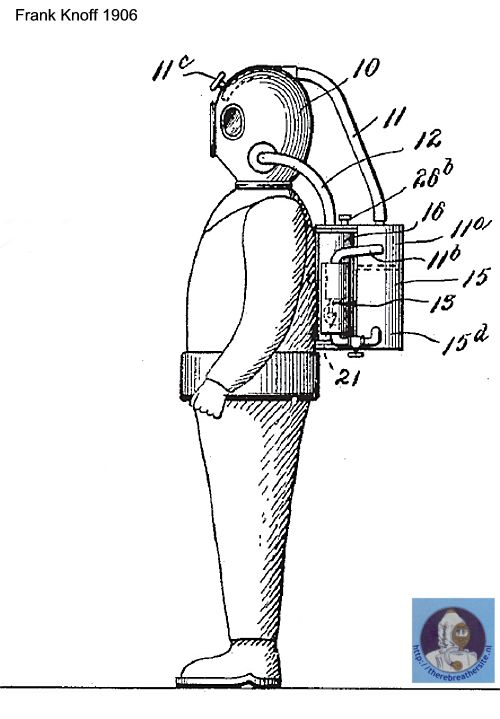
A metal casing is retained for the trunk, but both arms and legs are now covered with wire-stiffened waterproof cloth.
1906
Friedrich Gall

In 1906 Friedrich Gall patented a dress of rather peculiar shape. Apart from this, it has no features of special interest, except that the diver was provided with armoured and jointed gloves. The main joints were of the ball-and-socket pattern.
1906
M. Charles Pecourt de Pluvy
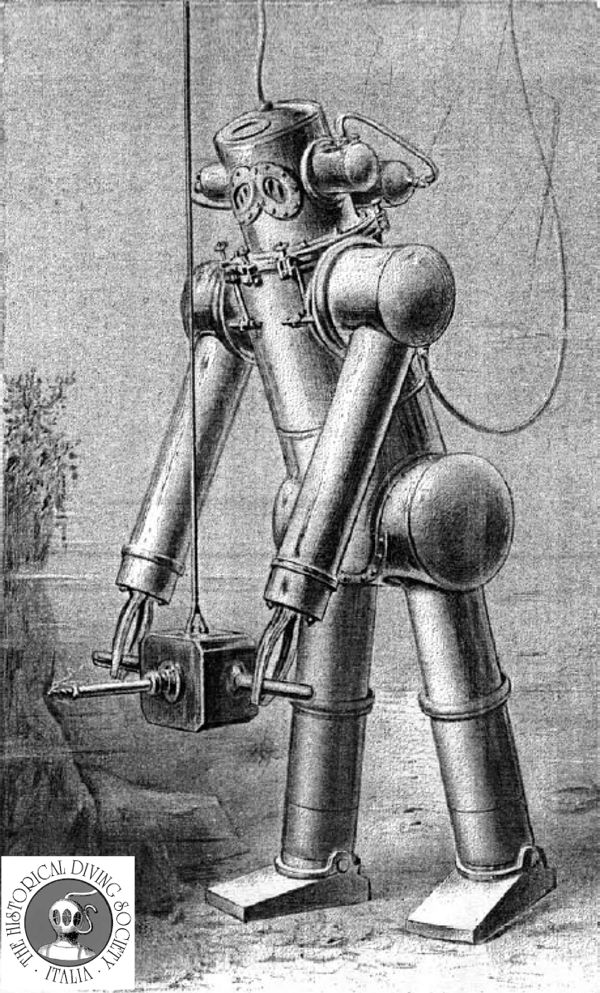
M. de Pluvy made one of the first regenerative type of atmospheric diving suits. Mr. Pluvy claimed to have made several dives to 100 meters with his suit. Although the joints were made of leather and rubber the suit seems to have worked.
1908
Hall and Rees
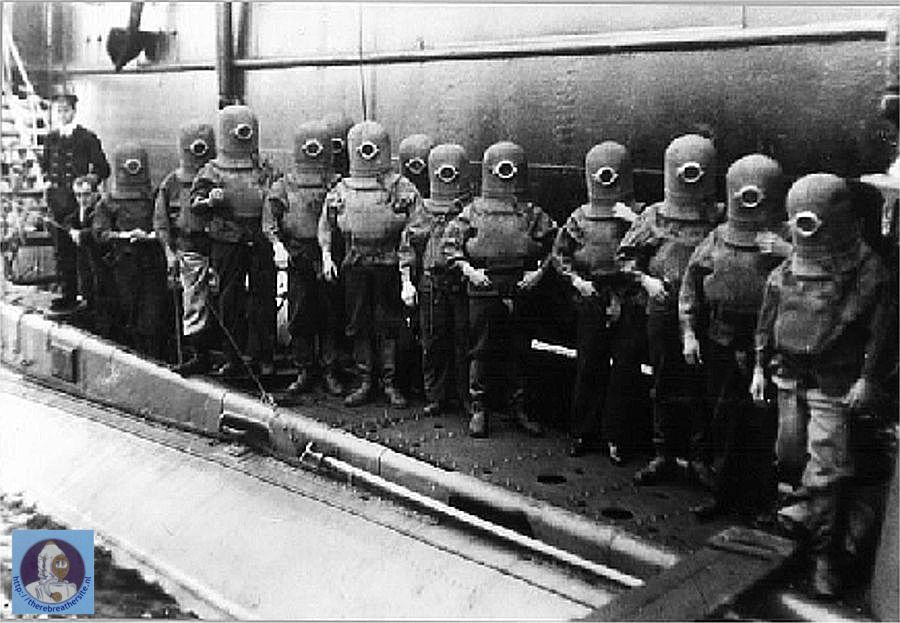
Although not directly related to atmospheric diving suits, the invention of a rebreather for escape purposes using Oxylithe is worth mentioning here.
1908
Giuseppe Restucci
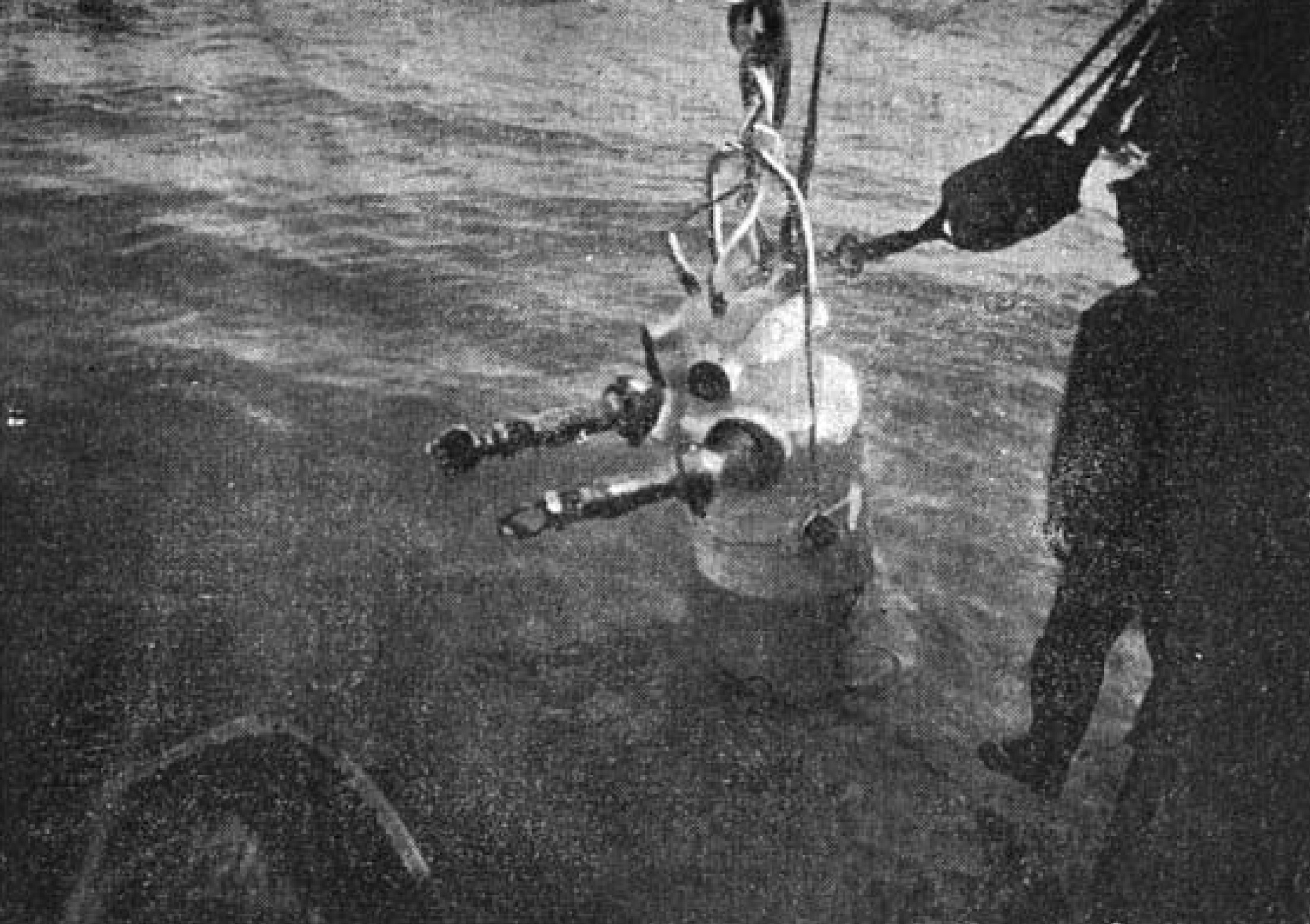
In 1904-1908, the retired technical chief of the Regia Marina, produced a very interesting drawings of three armoured diving suits. His specification showed an excellent knowledge of the problems and proposed viable, though sometimes very complicated, solutions.
1911
Enos B. Petrie

In 1911 Enos B. Petrie patented a sort of umbilical, in fact the air hose had a communication wiring integrated
1911
Anton Reznicek
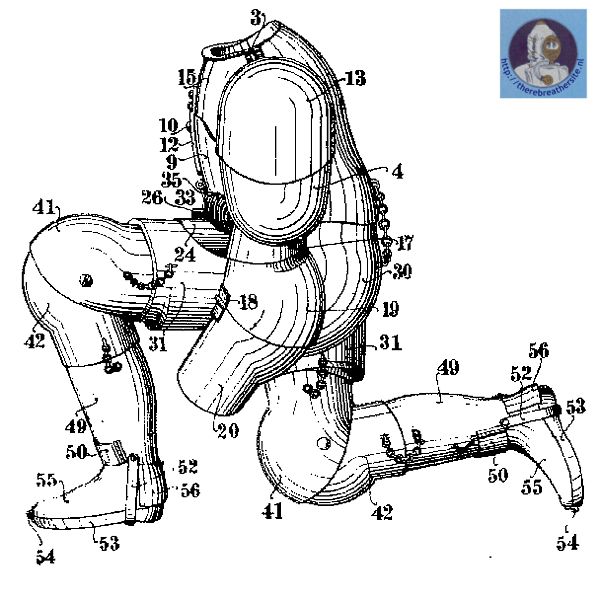
Anton Reznicek from Vienna patented his invention in 1911 as Austrian patent nr 50212. He described several ways to prevent the rubber cover of a diving armour to get entangled between the joints. By creating space in front of the joints and by using springs and cover plates covering the joints he claimed to have find a way to prevent the rubber to get between the joints.
1911
Charles Williamson
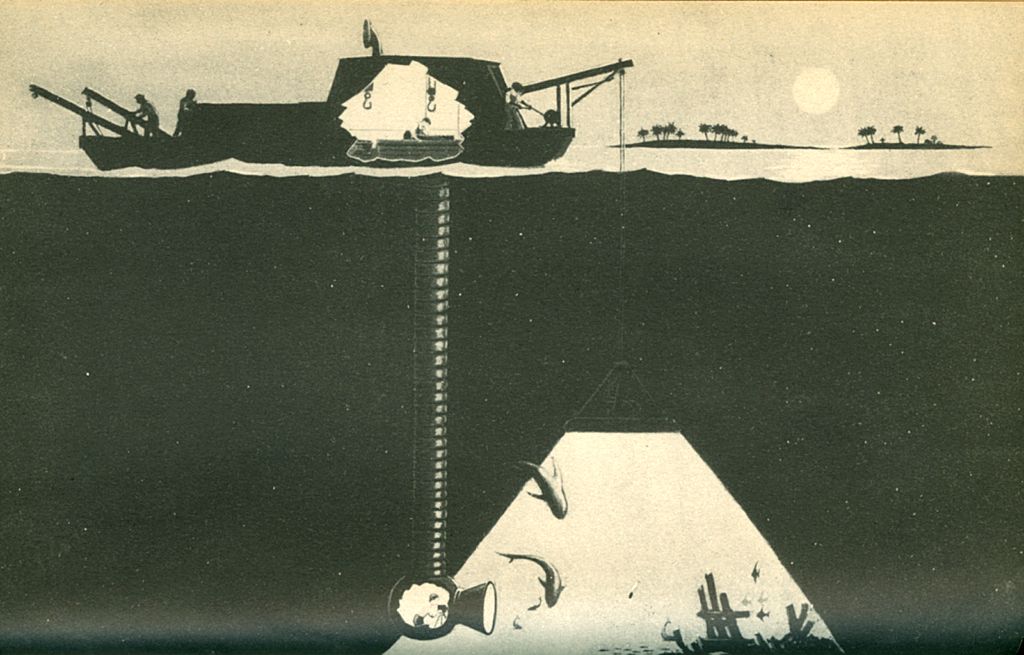
Charles Williamson was the father of John Ernest Williamson (1881-1966), an important cinematographer who made the first underwater films. Captain Charles Williamson was the inventor of a flexible arm with a coupled mitten. This flexible arm led to the development of a tube that could be lowered from a boat to the sea bottom.
1911
Chester E. MacDuffee
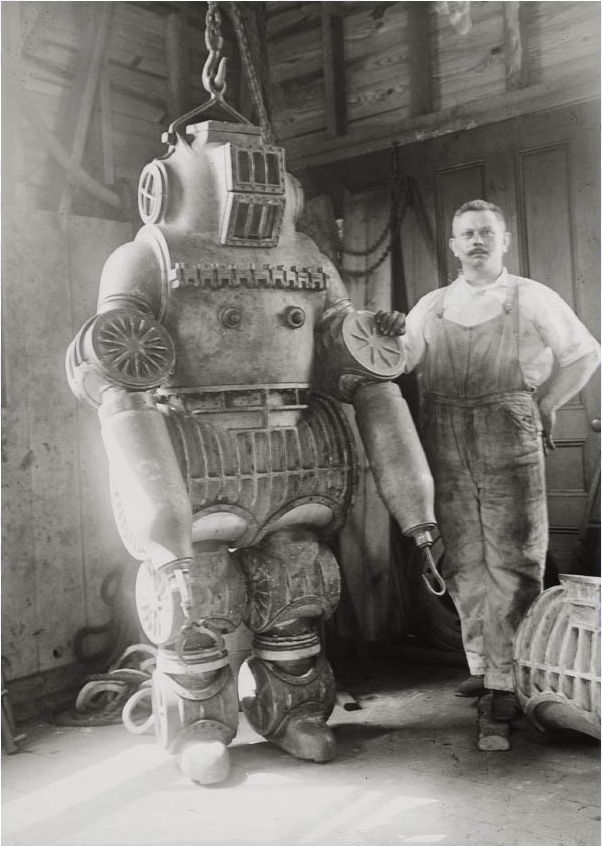
Macduffs ADS was tested in 1915 in Long Island Sound. It was made from aluminum alloy and weighted about 250 kilo. The cylindrical joints mounted on ball bearings allowed movement in one direction only. They do not appear to be watertight due to the fact Macduffee implemented a waterpump in the suit.
1912
Anderson and Silver
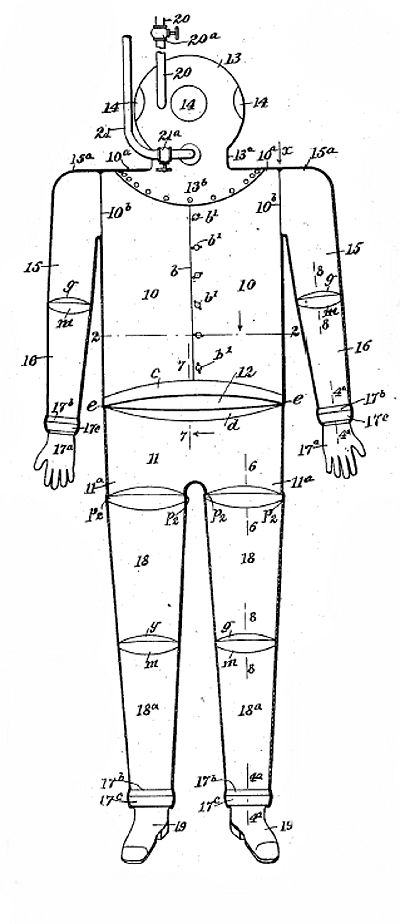
Anderson and Silver patented their suit in 1912. The suit was Attached to an air supply and was made of metal covered with an airtight and waterproof material.
1912
Durand and Bembina
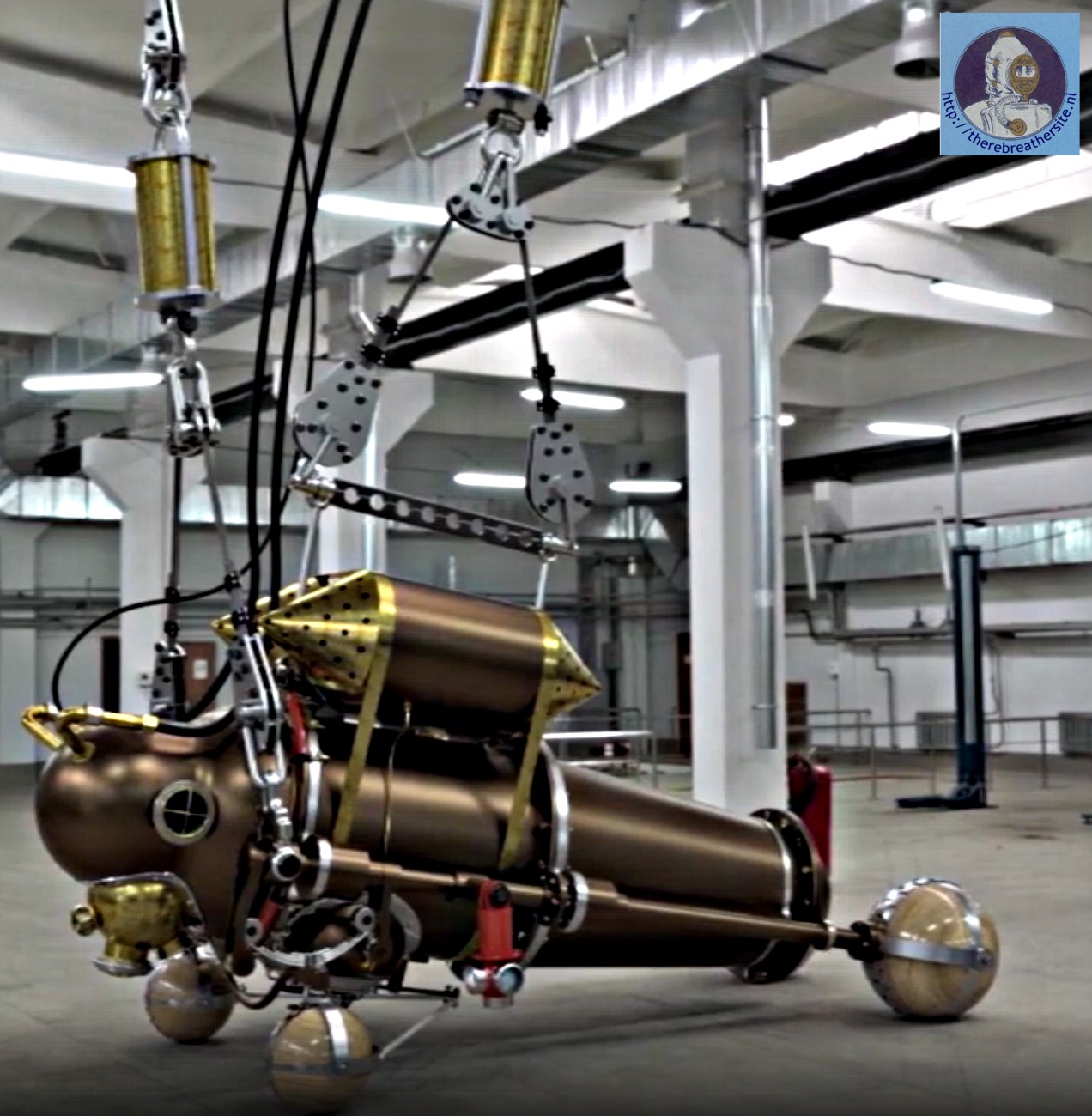
The dress proposed in 1912 by Leone Durand and Melchiorre Bembina is of a curious type, designed to be towed along the bottom, and to this end is fitted with four spherical oaken wheels. It can either be towed on two wheels, with the diver almost upright, or on all four, in which case he lies prone, or nearly so.
1913-1940
Neufeldt und Kuhnke
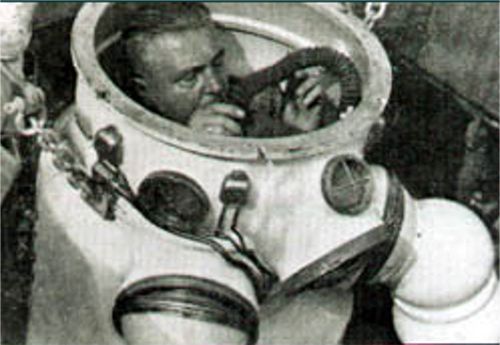
Neufeldt und Kuhnke, a German company from Kiel was the first large scale producer of atmospheric diving suits. The company obtained a number of patents and sold their suits during 27 years!
1914
Ernest Niehoff
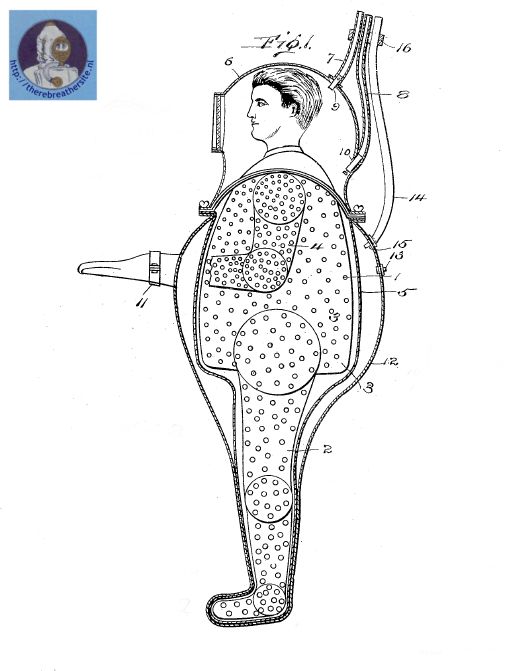
Ernest Niehoff living in Roanoke Virginia patented his suit in 1914. He called it a diving apparatus that consists of a inner flexible not waterproof metal shell.
1914
Jean F. Deray
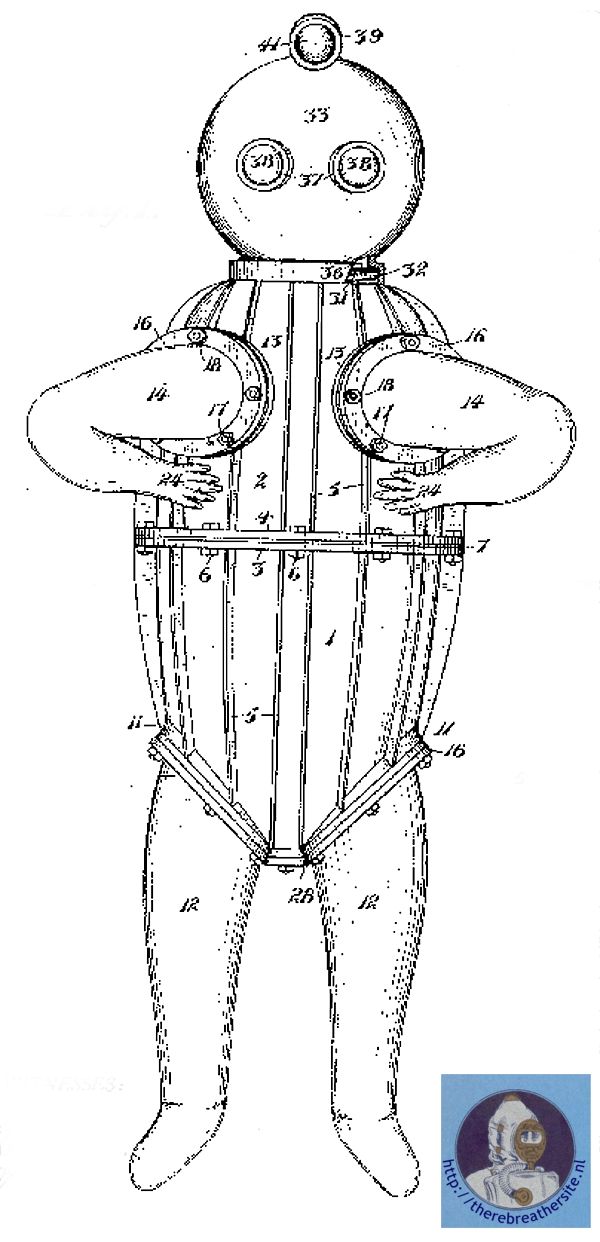
Mr. Deray lived in Sunnyvale Santa Clara USA.
He designed a suit he claimed able to dive to 45 meter.
1915
Benjamin F. Leavitt
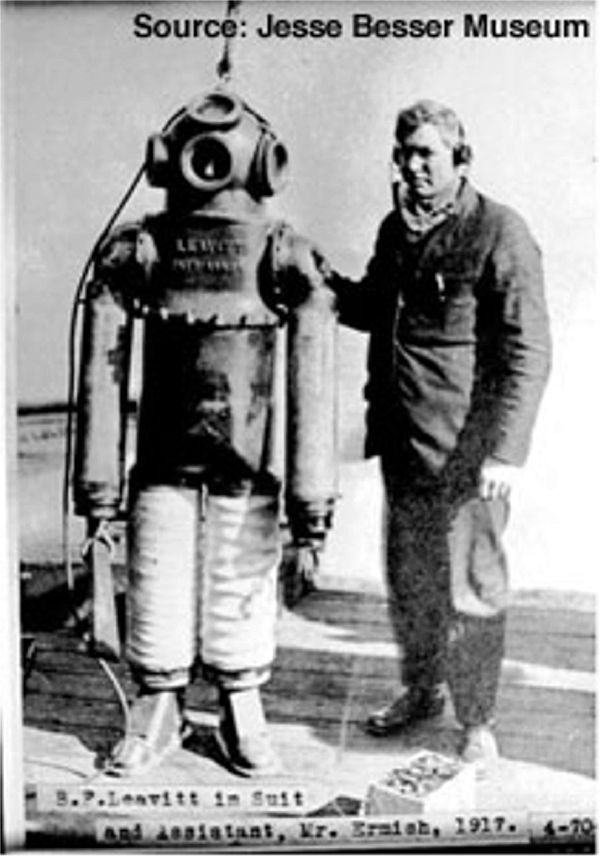
Benjamin Franklin Leavitt build another revival of spiral armouring like Buchanan and Gordon. The radius pieces of the flexible arms and legs add to the resemblance.
1915
Harry L. Bowdoin
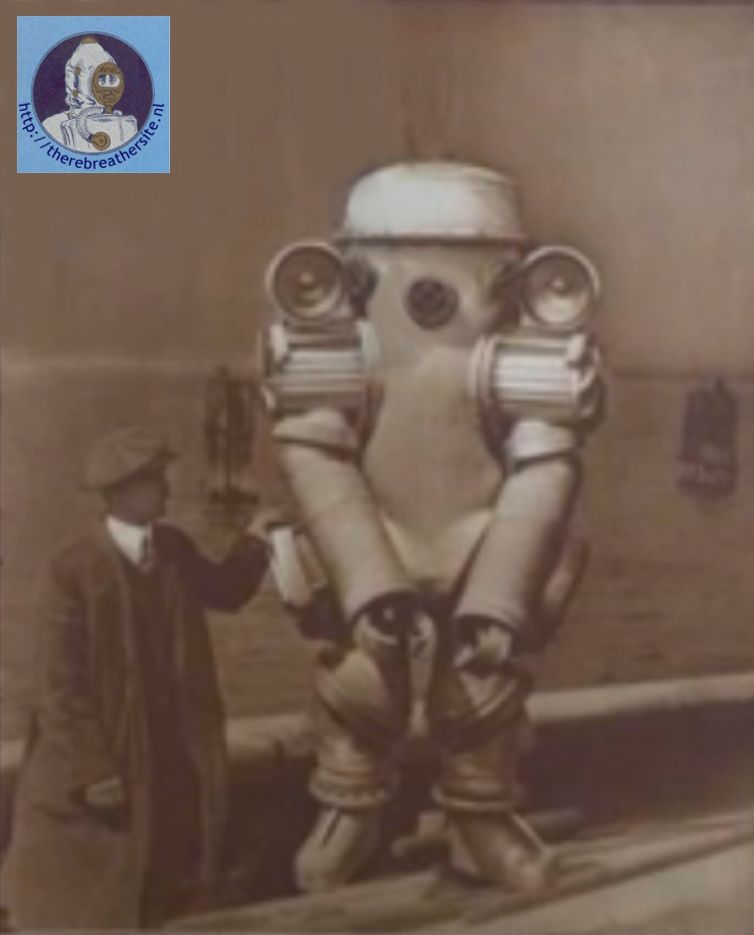
Bowdoin, 1915 (U.S.) – Harry L. Bowdoin of Bayonne, N.J., received a patent in 1915 for a new type of oil-filled rotary jointed armored diving suit. The joints had a small duct leading to the interior of the joint to allow the external and internal pressure to equalize.
1915
William Phillips Thompson

Thompson’s patent shows a protective shell over the ball joints of a diving suit. The reason may be that the joints have a high precision and once damaged the surface can no longer seal on the seals.
1916
William S. Boyd
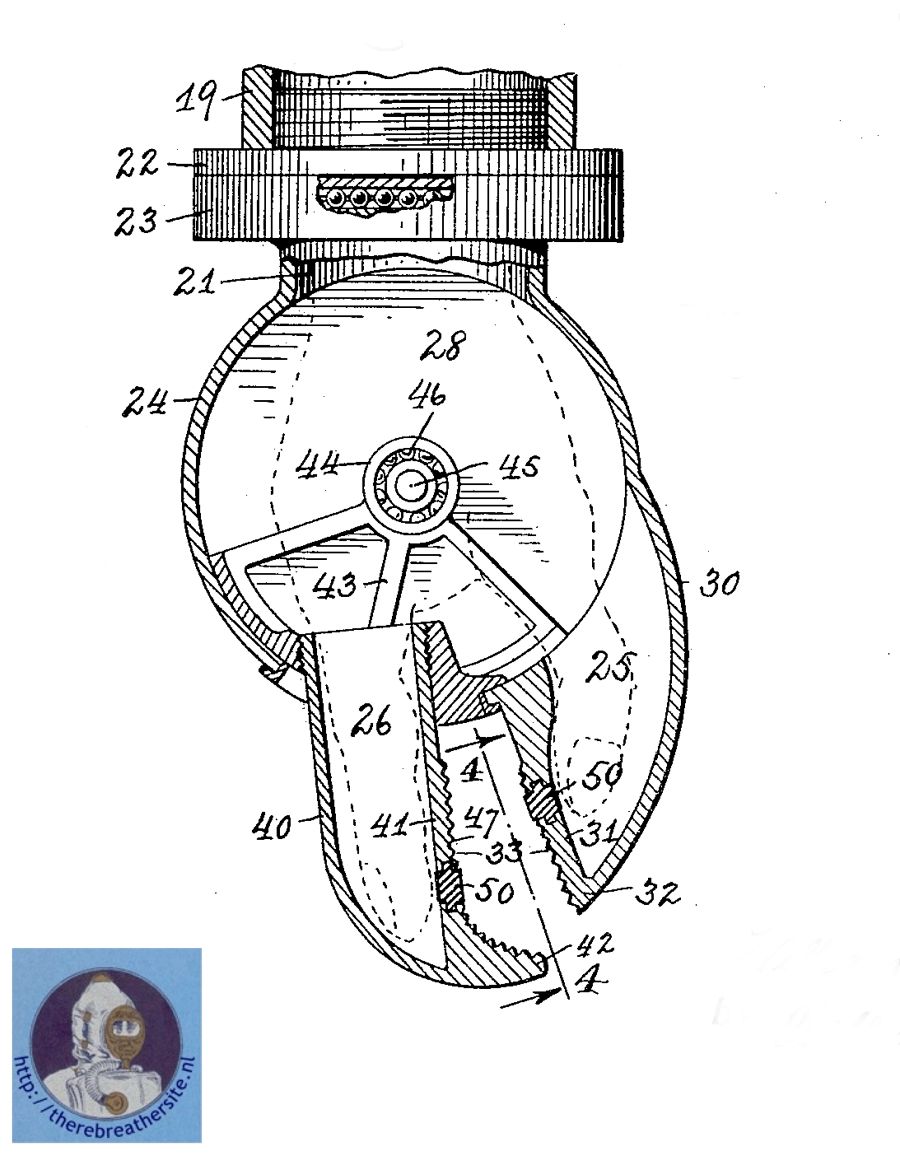
William S Boyd lived in Greatkills Richmond New York in 1916. He patented a new type watertight joint and tool.
1916
Miller and Dunn
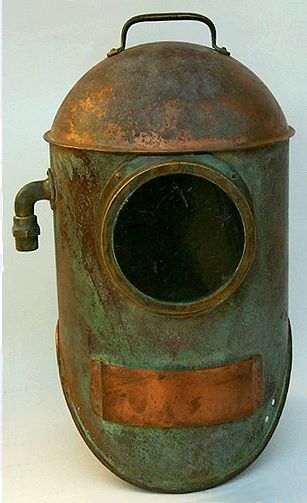
The Miller and Dunn helmets were produced by the Miller Dunn Company from Miami Florida. The helmets were used by the Navy and by civilians for many years.
1917
Georg Stolle
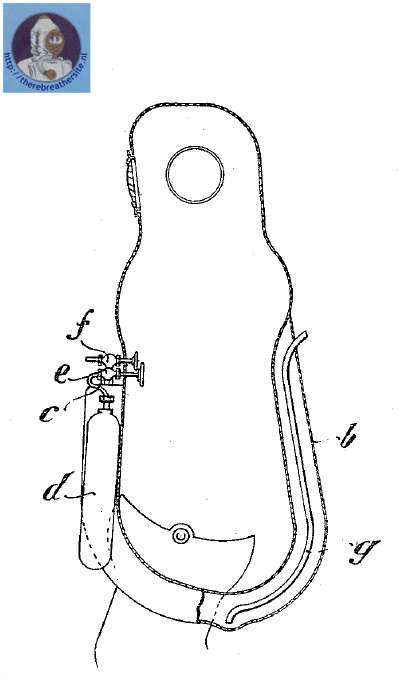
There is not much known about George Stolle. His patent was registered in 1917. He put the design in in 1914. Stolle was a citizen of Kiel Germany.In 1920 he patented another suit with F. Gall. Gall later worked for Neufeldt und Kuhnke.
1917
Frank William Walters

F.W. Walter from New Zealand patented an improved diving suit with increased resistance to water pressure. He used metal bands and fabric for this.
1917
Rudi de Graff

Little information can be found about Rudi de Graff. The American Russian filed a patent in 1917 which was granted in 1921. Below is written down what he claims in his patent.
1918
William John Mellersh-Jackson for Leavitt Co.
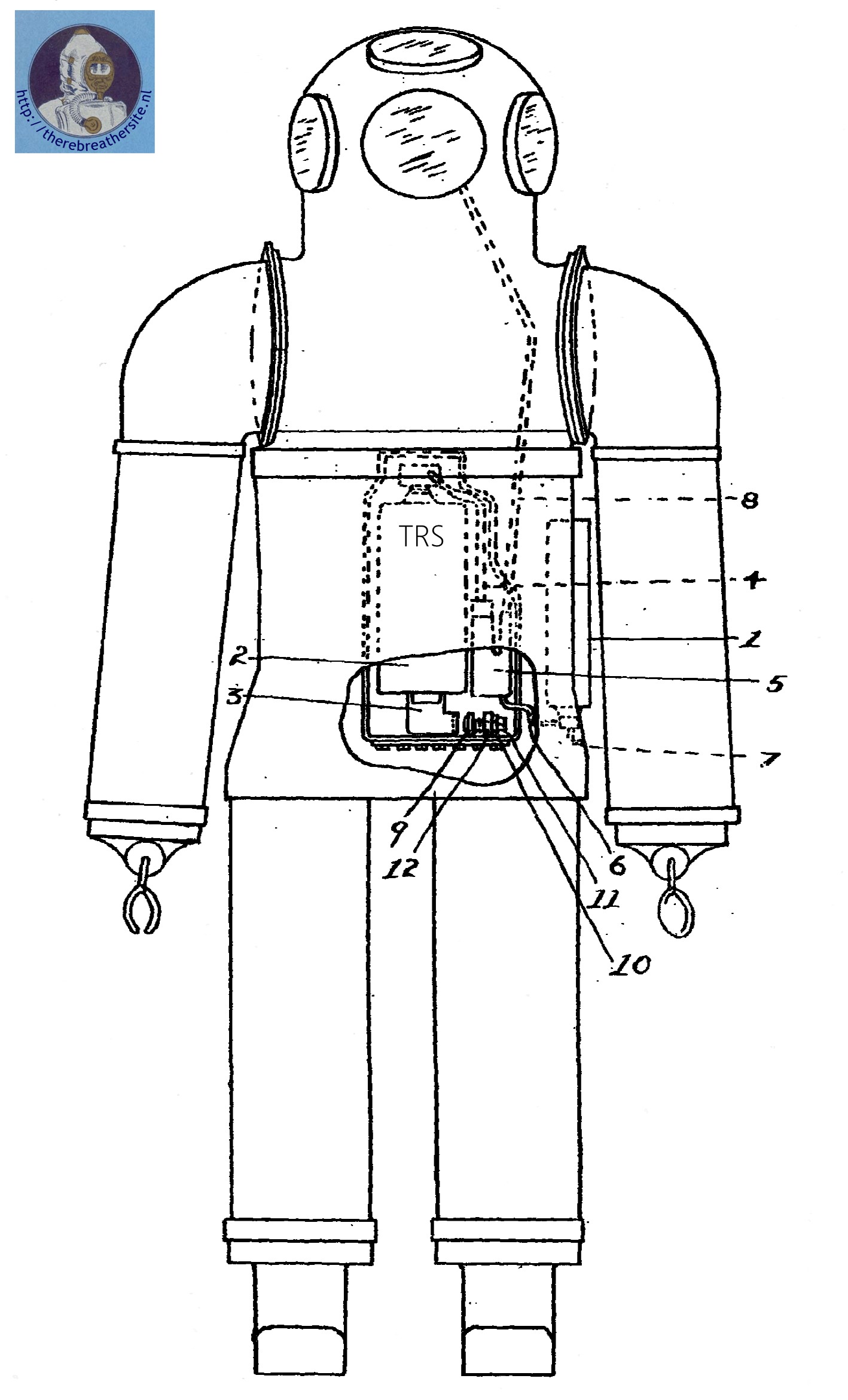
In 1918 William John Mellersh-Jackson filed a patent application working at Haseltine Lake & Co in London for the Leavitt Company USA for a breathing system to be used in atmospheric diving suits.The oxygen rebreather in question was novel in that the invention provided a solution to the risk of gas release that occurs when water comes into contact with caustic soda.
1919
James F. Long Texas USA
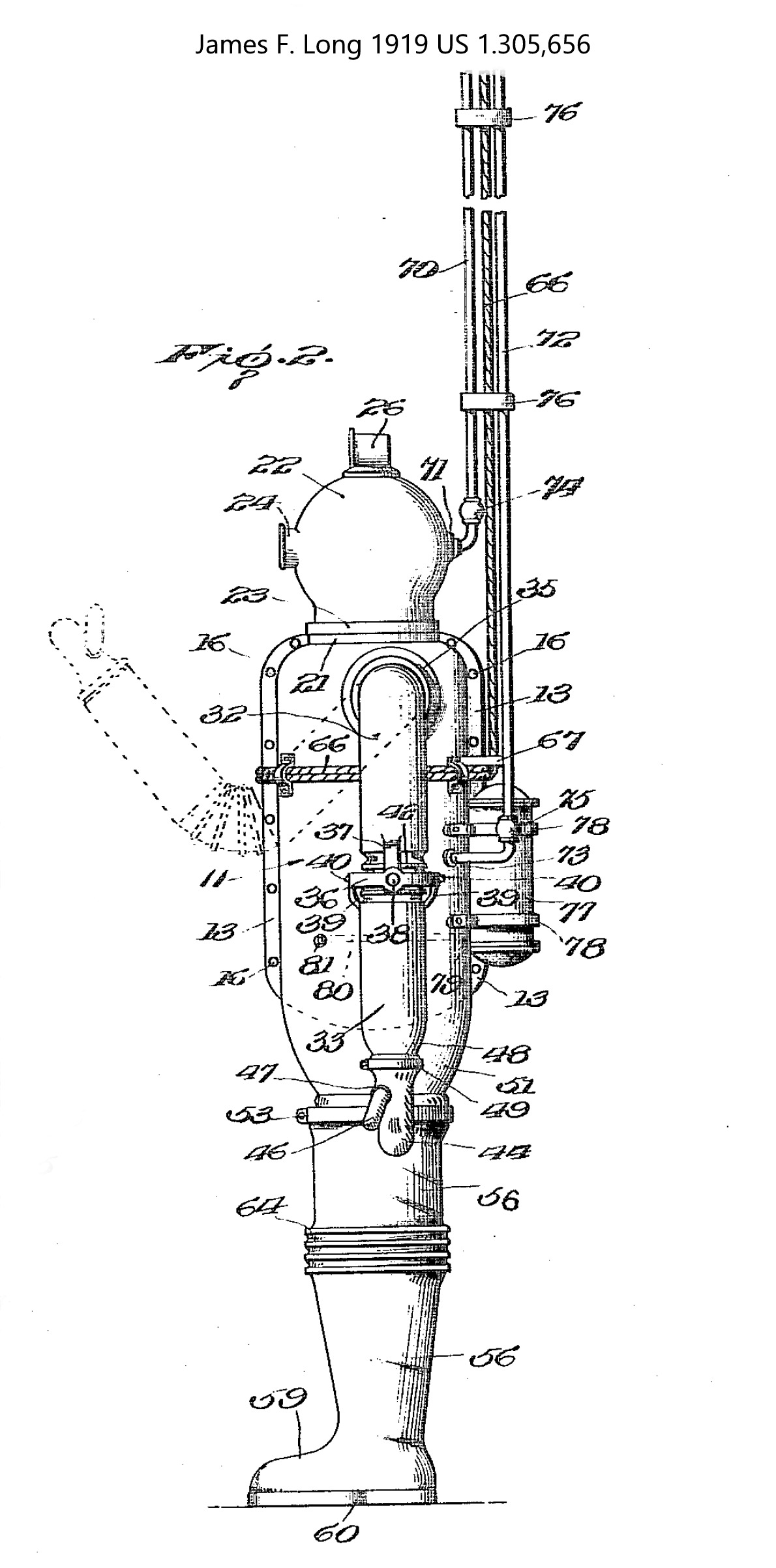
The patent of James F. Long from Texas USA shows an ADS where the waterproofing is obtained by covering the metal suit with waterproof fabric. No other innovations can be found in the patent claim. Supply and return of breathing air via hoses from the surface.
1920
L. Vain Talling Estonia
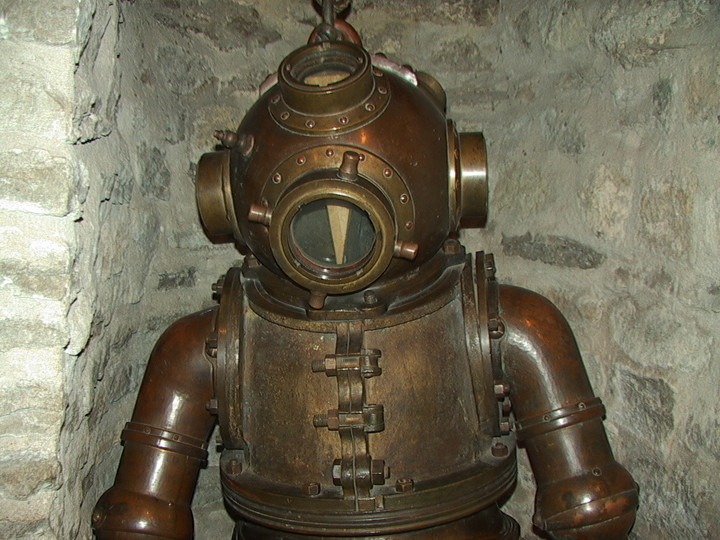
I have not been able to find much information about this copper diving suit. It is on display in the Estonian Maritime Museum with the text that the suit was made by L. Vain in 1920 and has never been used.
1920
Frank W. Walters
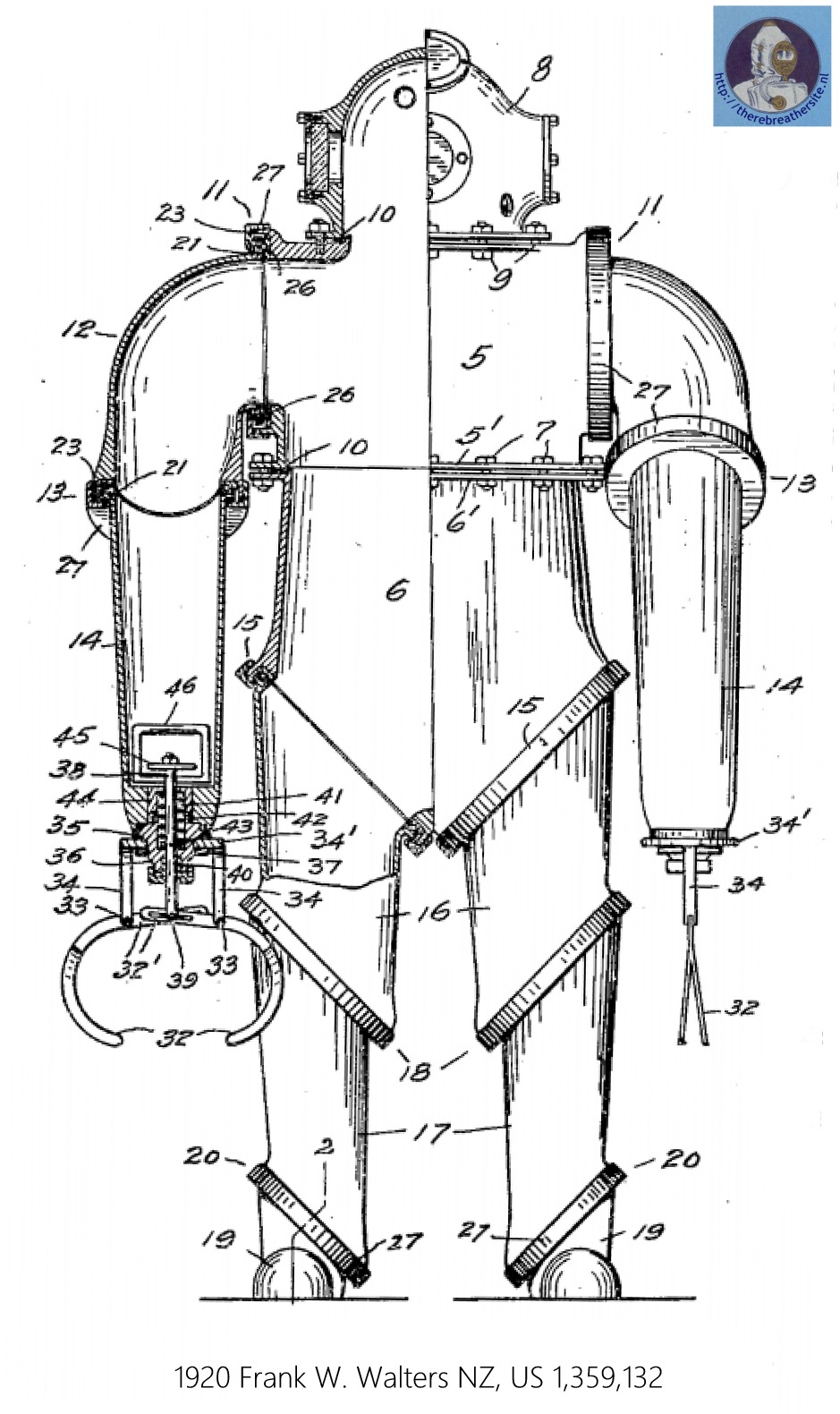
Frank W. Walters, who first lived in New Zealand and patented another invention in 1917 now patented a Submarine Armor in Canada.
